2018 has been a year of extremes. The year started with stocks becoming extremely over-bought, and ended with stocks getting extremely over-sold.
In fact, 2018 hosted the worst December performance since 1931.
The December 23 Profit Radar Report stated that:
“We are likely in an environment where pessimism can become even more extreme, but those extremes can cause violent 1 - 5 day spikes. In terms of seasonality, a Santa Clause Rally (last 5 days of 2018, and first 2 days of 2019), occurs 73.5% of the time (since 1970). The odds of a multi-day rally - within a longer down trend - are elevated.”
Barron's rates iSPYETF as "trader with a good track record" and Investor's Business Daily says: "When Simon says, the market listens." Find out why Barron's and IBD endorse Simon Maierhofer's Profit Radar Report.
Over the next two days, the S&P 500 dropped to 2,347 (the lowest level since May 2017), and thereafter jolted 5% higher, in a single day.
How does this rally (up to 174 points in 3 days) fit into the larger picture?
The DJIA already reached its ideal down side target (21,700, which is where wave 3 or c equals 1.618 x wave 1 or a).
The S&P 500 has not yet reached its ideal down side target (2,269, which is where wave 3 or c equals 1.618 x wave 1 or a). However, the S&P bounced from 2,349, where wave 3 or c equals 1.382 x wave 1 or a).
If you enjoy quality, hand-crafted research, >> Sign up for the FREE iSPYETF e-Newsletter
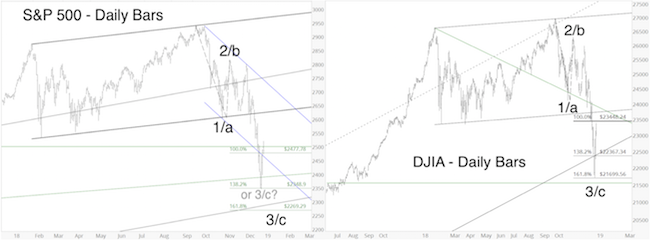
In other words, we are dealing with a measure of conflict:
-
The DJIA already reached it’s down side target, the S&P 500 did not.
-
Sentiment at the December 26 low was extremely compressed, which allows for a larger bounce.
How do we resolve the conflict?
The December 30 Profit Radar Report published the chart below, which illustrates the ideal outcome, along with the following commentary:
“The S&P 500 has not reached the 161.8% Fibonacci projection level (2,269), which as a common down side target for waves 3. Unless the S&P closes above Friday’s high (2,520), we assume that we’ll see new lows.”
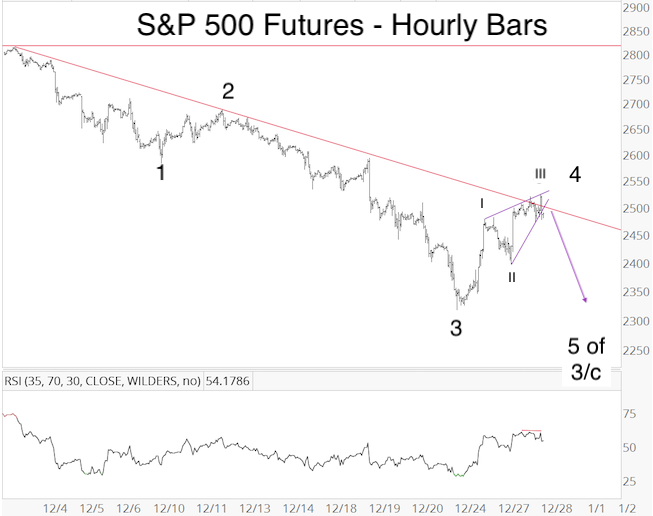
The above path is still in harmony with the outlook published in the October 28, 2018 Profit Radar Report, which projected (yellow lines, chart below) a rally from 2,600 to 2,850 (in October/November) followed by a drop to about 2,400 thereafter.
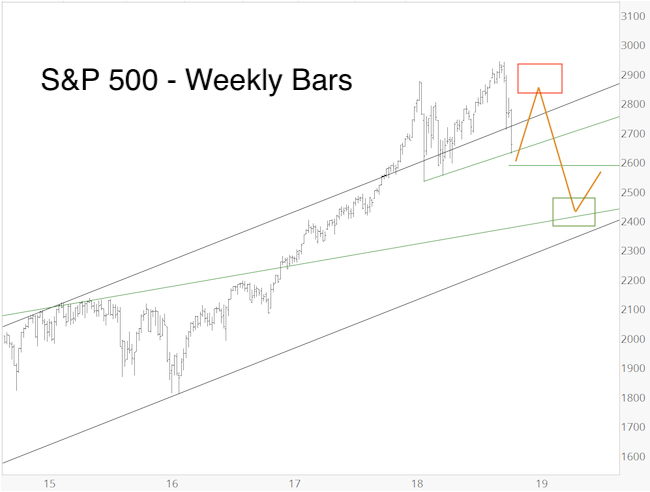
Obviously there has been much flux and volatility, and trading this market comes with a fair amount of risk.
But, where there’s risk, there is usually opportunity, and if the S&P follows our path, hits our down side target while over-sold and with bullish divergences, we will want to buy.
UPDATE
The S&P 500 moved above 2,520, which invalidated the immediate risk of lower prices. Next resistance is at 2,595 - 2,625 (see chart below). Last week also triggered a double breadth thrust. This is a rare and generally longer-term bullish signal. More about that soon.
Continued updates are available via the Profit Radar Report.
For more detail on how my multi-indicator approach foresaw the environment for a market crash, click here:
How to Predict a Market Crash
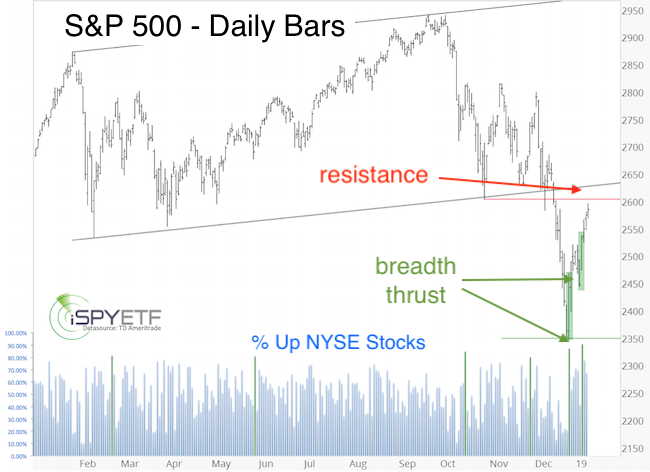
Simon Maierhofer is the founder of iSPYETF and the publisher of the Profit Radar Report. Barron's rated iSPYETF as a "trader with a good track record" (click here for Barron's evaluation of the Profit Radar Report). The Profit Radar Report presents complex market analysis (S&P 500, Dow Jones, gold, silver, euro and bonds) in an easy format. Technical analysis, sentiment indicators, seasonal patterns and common sense are all wrapped up into two or more easy-to-read weekly updates. All Profit Radar Report recommendations resulted in a 59.51% net gain in 2013, 17.59% in 2014, 24.52% in 2015, 52.26% in 2016, and 23.39% in 2017.
Follow Simon on Twitter @ iSPYETF or sign up for the FREE iSPYETF e-Newsletter to get actionable ETF trade ideas delivered for free.
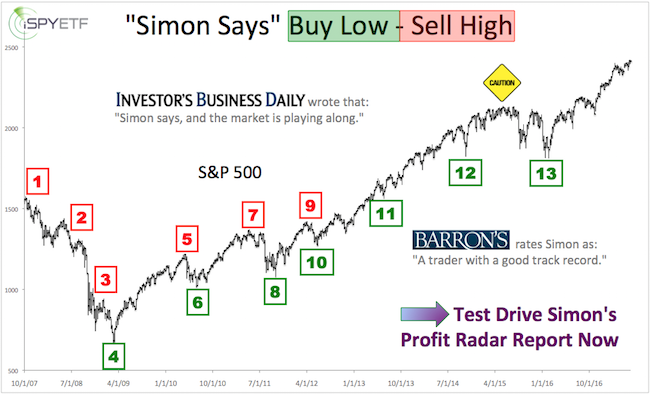
|